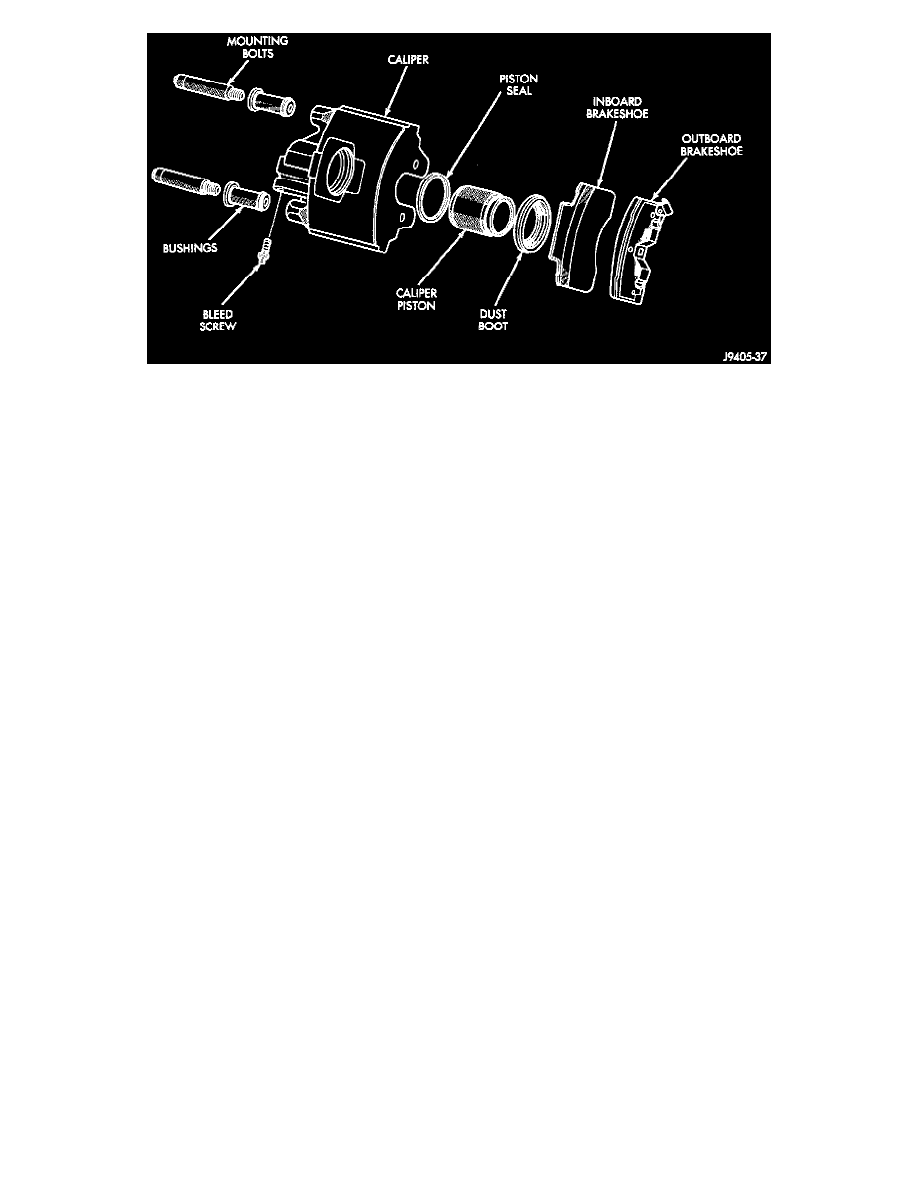RAM 3500 Truck 2WD V10-8.0L VIN W (1997)

Caliper Components
6. Remove piston seal from caliper and discard seal it is not reusable.
7. Remove mounting bolts from calipers and inspect seals, boots, and bushings. Remove these components only if cut, worn, or damaged.
8. Remove caliper bleed screw.
Assembly
CAUTION: Be sure caliper assembly area of workbench is clean and dry. This is important as dust, dirt, foreign material, oil, or solvents can damage
seals, harm piston surfaces and contaminate fluid.
1. Clean the caliper and piston with brake cleaner, clean brake fluid, or denatured alcohol. Do not use any other cleaning agents.
2. Inspect condition of the caliper piston bore. The piston must be free of corrosion, rust, pitting, or scoring. Replace the piston if it exhibits any of
these conditions.
3. A fiber brush can be used to clean the bore if necessary. The bore should be free of corrosion, pitting, or scoring. Discoloration of the bore is a
normal condition and not cause for replacement. The bore can be lightly polished by hand but only with crocus cloth.
CAUTION: Never hone the caliper piston bore, or use any kind of abrasive material on the piston surface. Honing will result in an oversize bore
and abrasives will damage the piston coating. Either of these practices will result in piston bind and eventual seizure.
4. Inspect condition of the threads in the inlet and bleed screw ports. Replace the caliper if thread damage is evident. Do not attempt to salvage the
threads.
5. Check the bushings in the caliper mounting bolt bores. Replace the bushings if worn, cut, or torn.
6. Lubricate caliper piston, piston seal and piston bore with liberal quantity of clean, fresh brake fluid.
